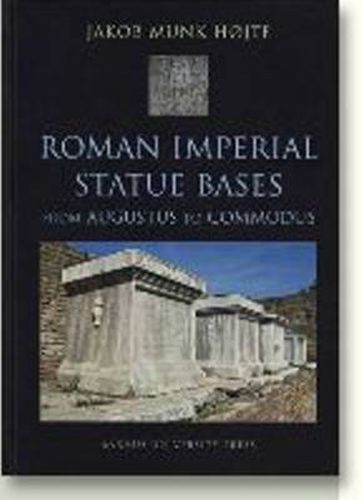Readings Newsletter
Become a Readings Member to make your shopping experience even easier.
Sign in or sign up for free!
You’re not far away from qualifying for FREE standard shipping within Australia
You’ve qualified for FREE standard shipping within Australia
The cart is loading…






The study of Roman imperial statues has made remarkable strides in the last two decades. Yet the field’s understandable focus on extant portraits has made it difficult to generalise accurately. Most notably, bronze was usually the material of choice, but its high scrap value meant that such statues were inevitably melted down, so that almost all surviving statues are of stone. By examining the much larger and more representative body of statue bases, Jakob Munk Hojte is here able to situate the statues themselves in context. This volume includes a catalogue of 2300 known statue bases from nearly 800 sites throughout the Roman Empire. Moreover, since it covers a period of 250 years, it allows for the first time consistent geographic, chronological and commemorative patterns to emerge. Hojte finds among other things that imperial portrait statues are connected chiefly with urban centres; that they were raised continuously during a given reign, with a higher concentration a couple years after accession; that a primary purpose was often to advertise a donor’s merits; and that they increased six-fold in frequency from Augustus to Hadrian, an increase attributable to community dedications.
$9.00 standard shipping within Australia
FREE standard shipping within Australia for orders over $100.00
Express & International shipping calculated at checkout
The study of Roman imperial statues has made remarkable strides in the last two decades. Yet the field’s understandable focus on extant portraits has made it difficult to generalise accurately. Most notably, bronze was usually the material of choice, but its high scrap value meant that such statues were inevitably melted down, so that almost all surviving statues are of stone. By examining the much larger and more representative body of statue bases, Jakob Munk Hojte is here able to situate the statues themselves in context. This volume includes a catalogue of 2300 known statue bases from nearly 800 sites throughout the Roman Empire. Moreover, since it covers a period of 250 years, it allows for the first time consistent geographic, chronological and commemorative patterns to emerge. Hojte finds among other things that imperial portrait statues are connected chiefly with urban centres; that they were raised continuously during a given reign, with a higher concentration a couple years after accession; that a primary purpose was often to advertise a donor’s merits; and that they increased six-fold in frequency from Augustus to Hadrian, an increase attributable to community dedications.